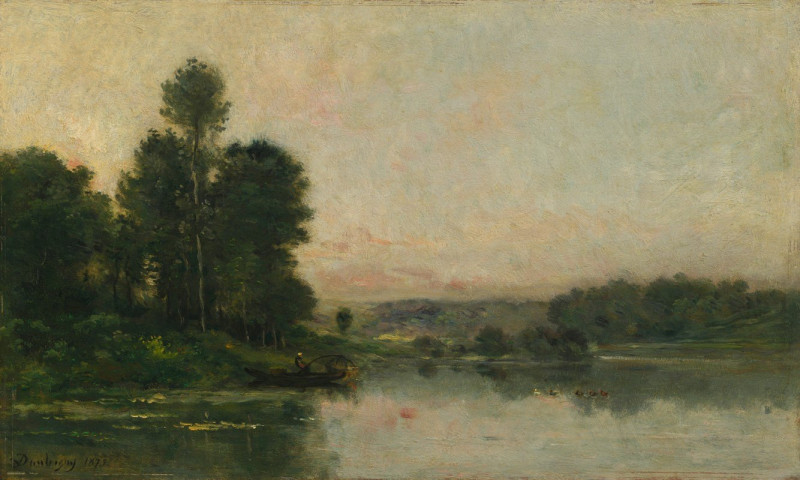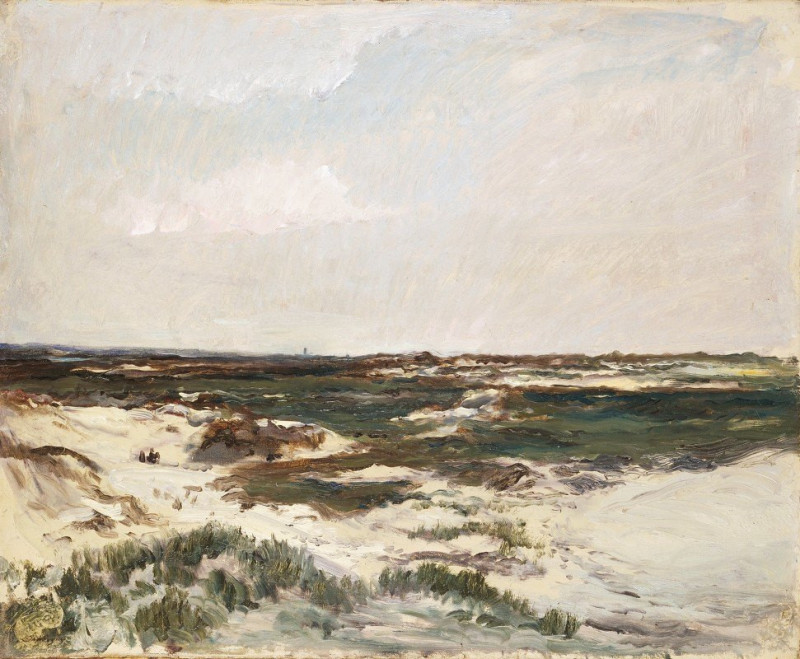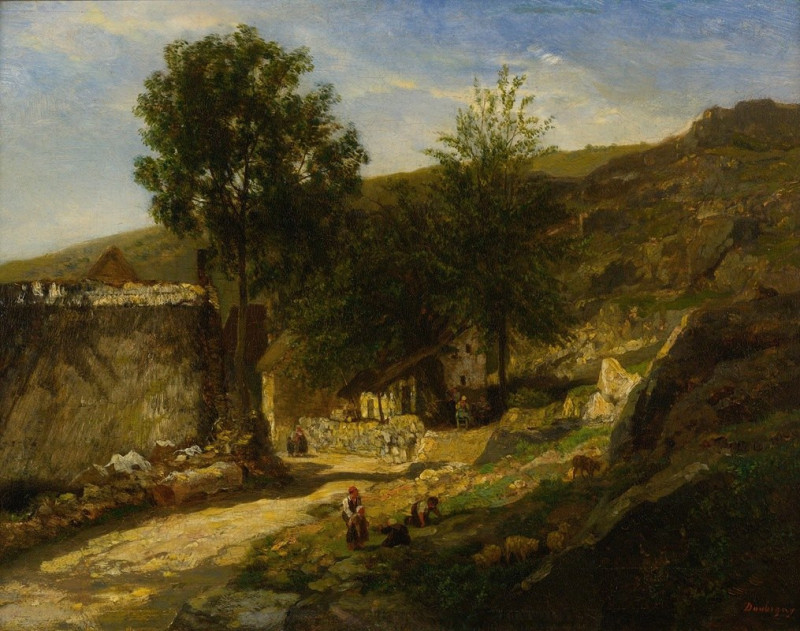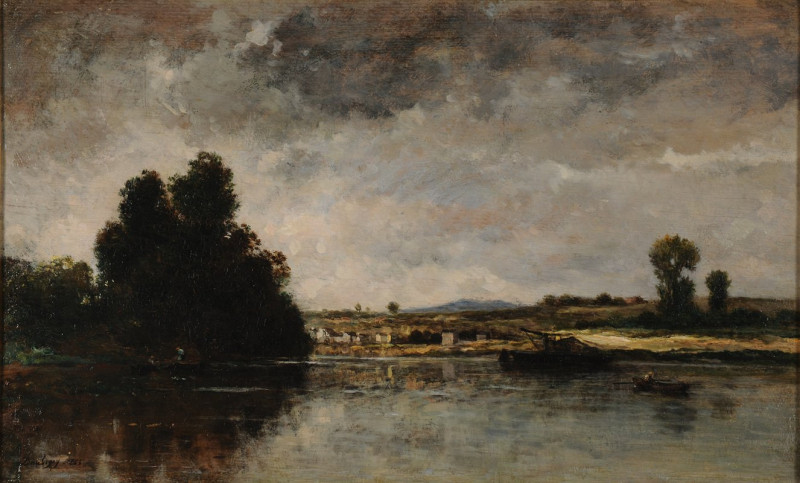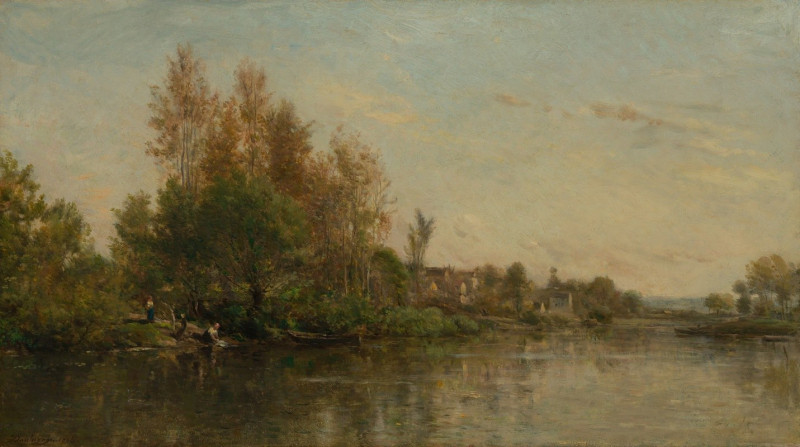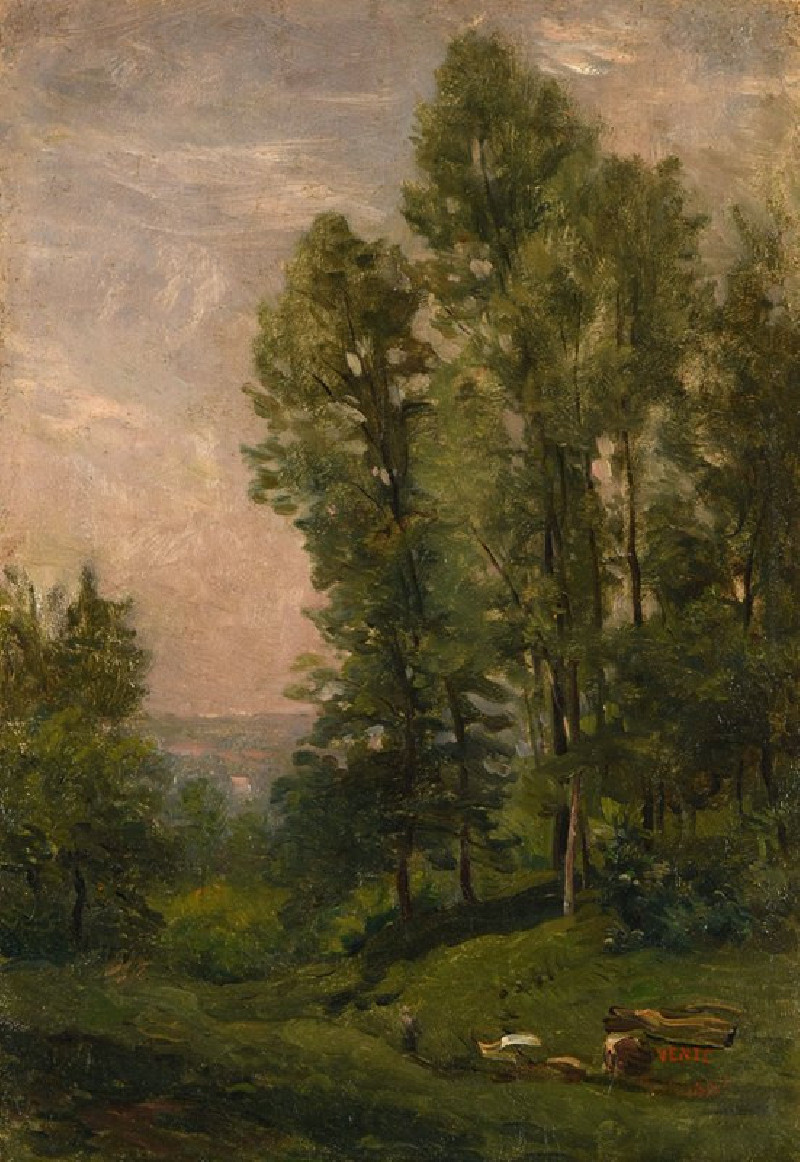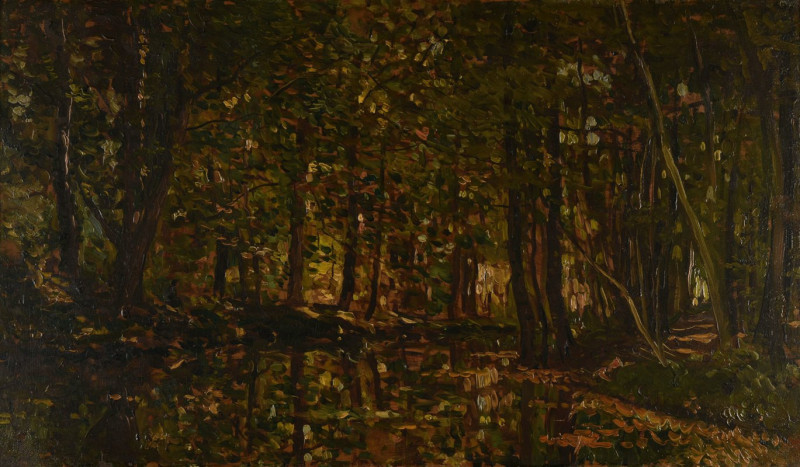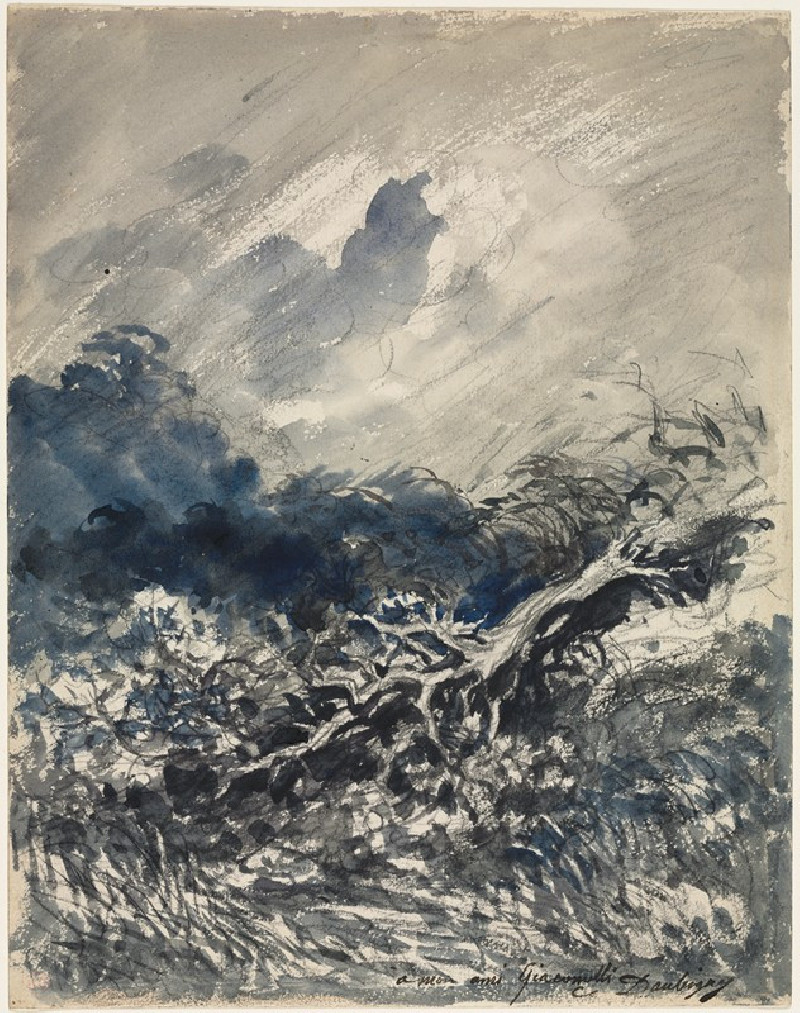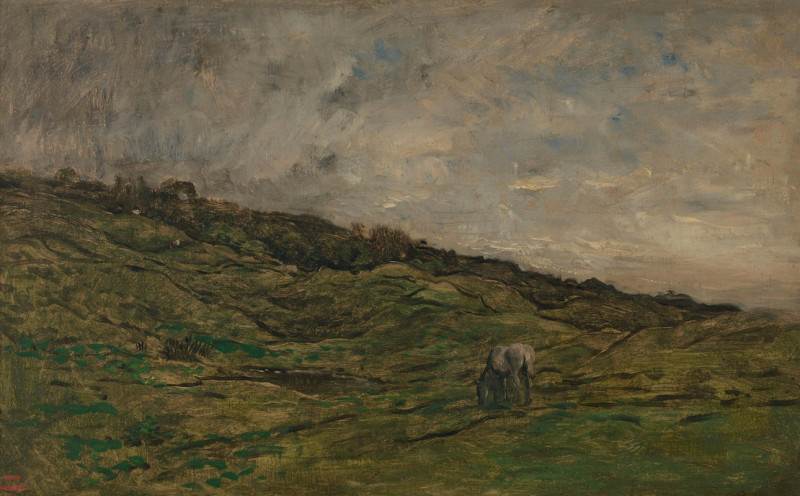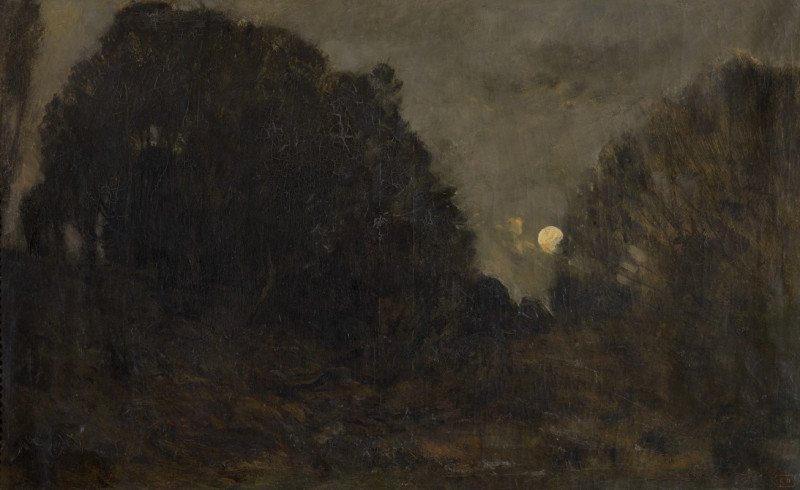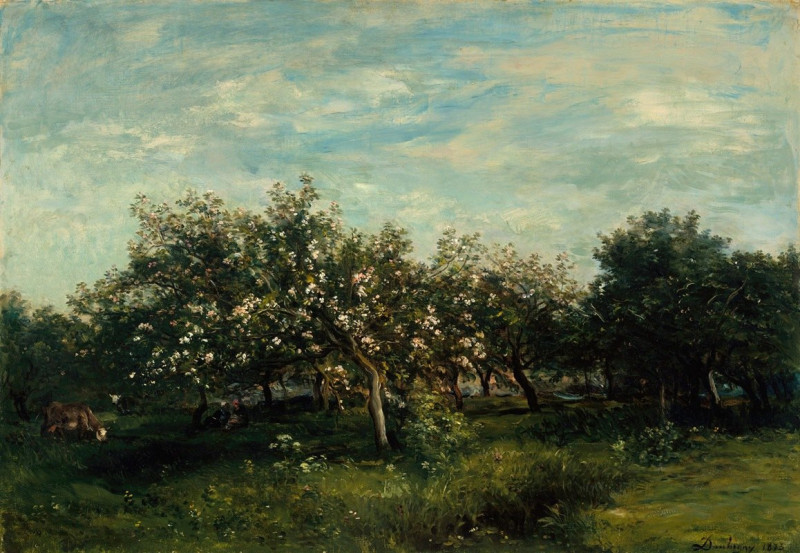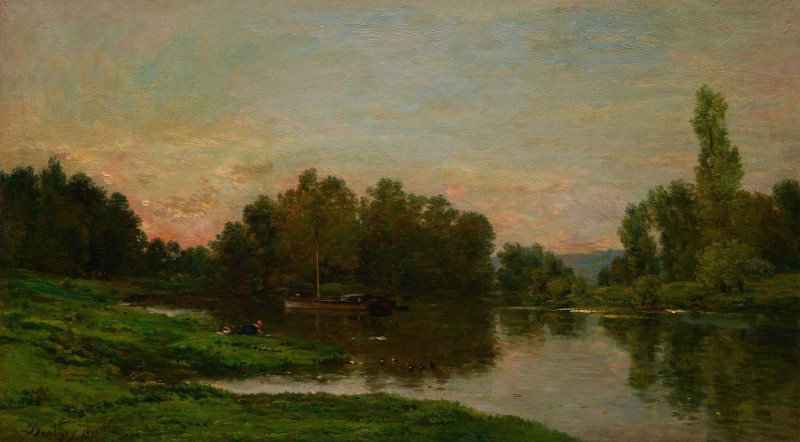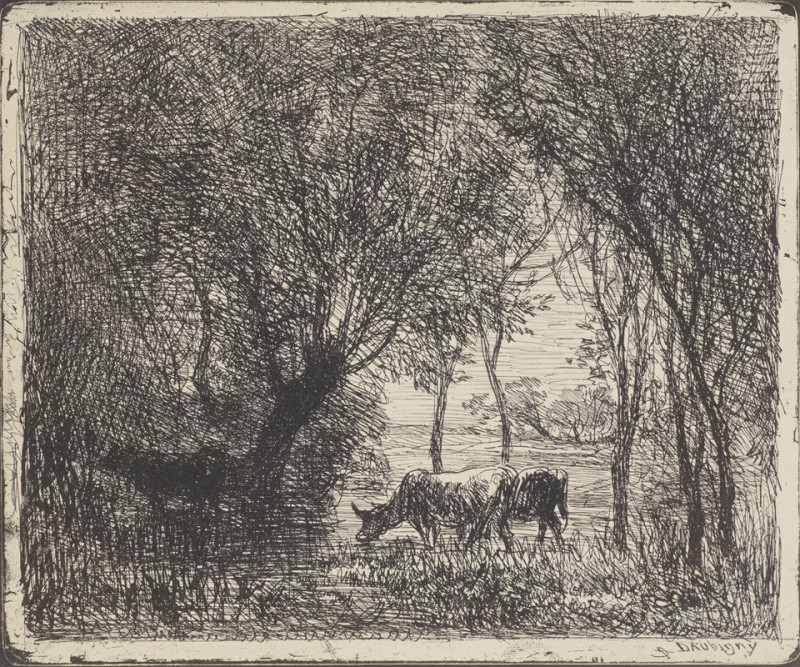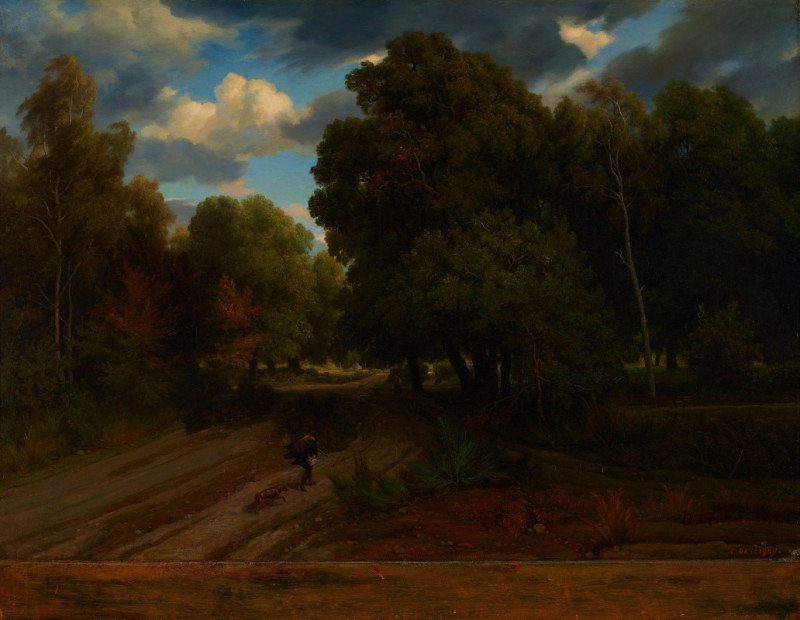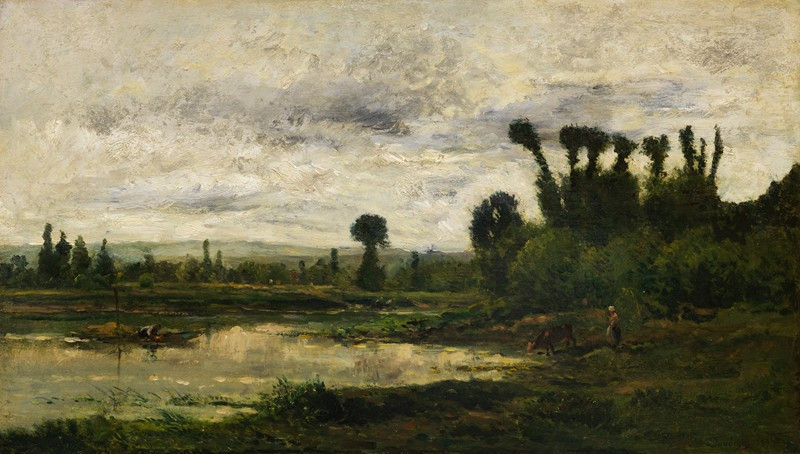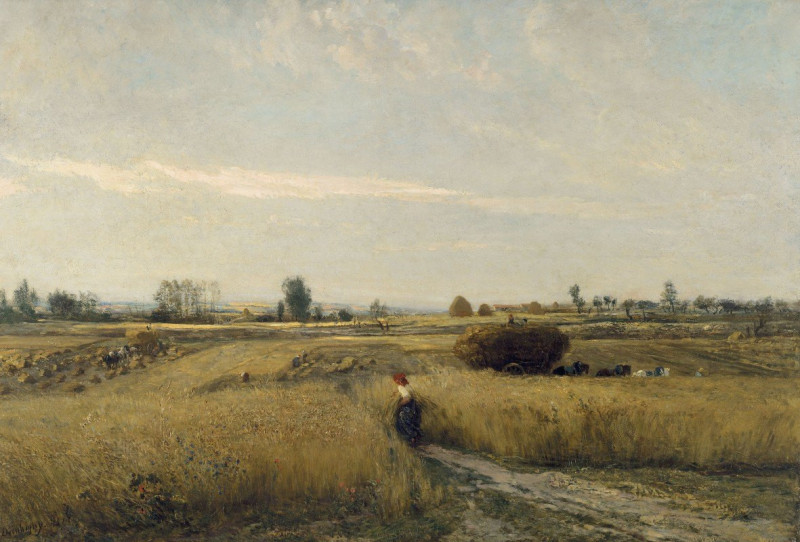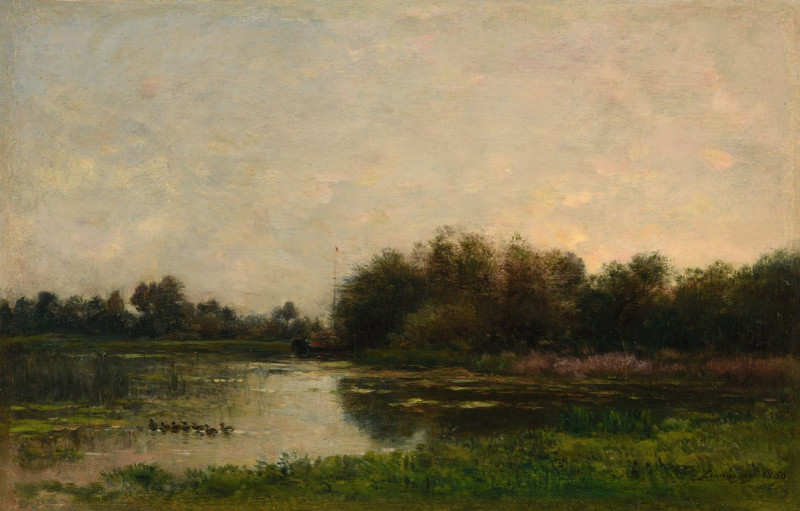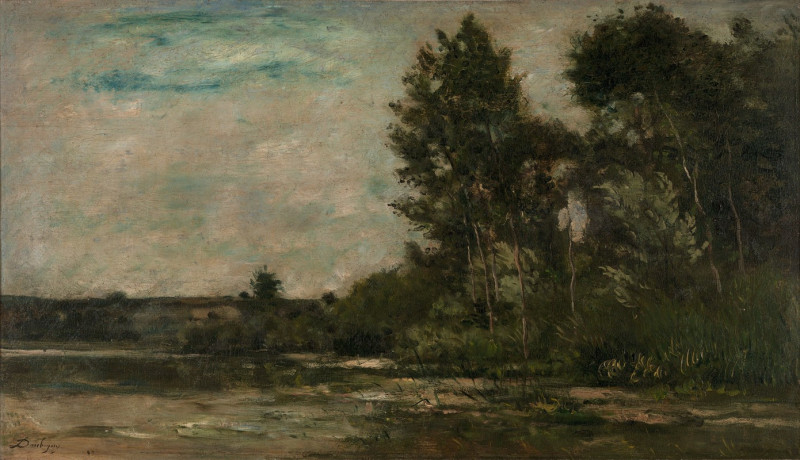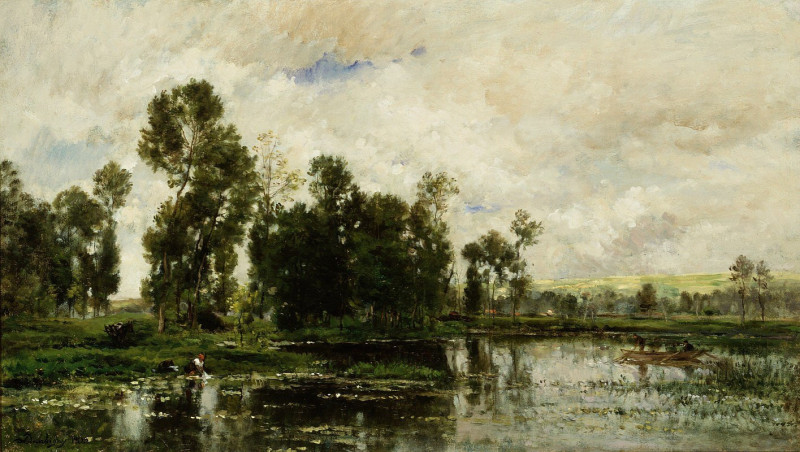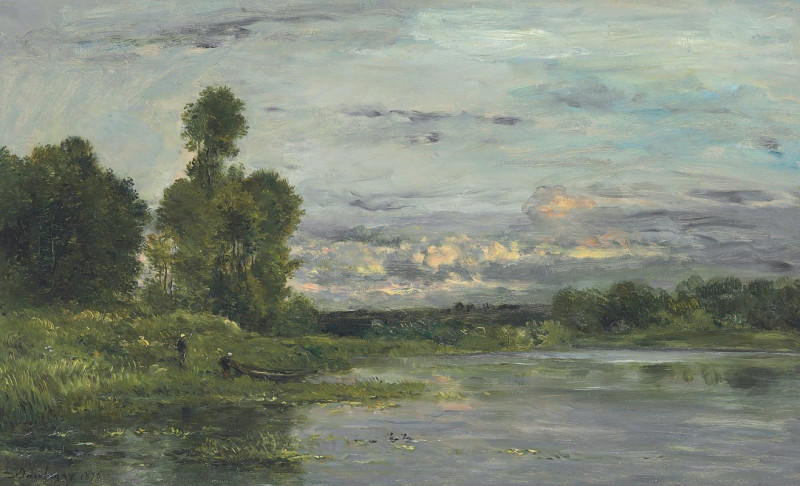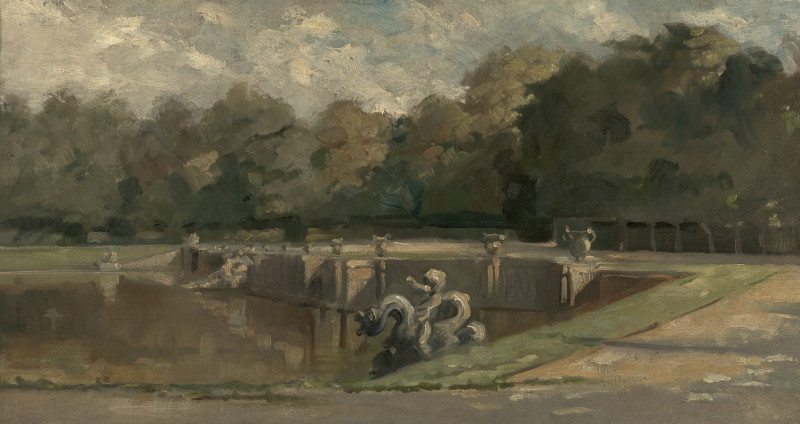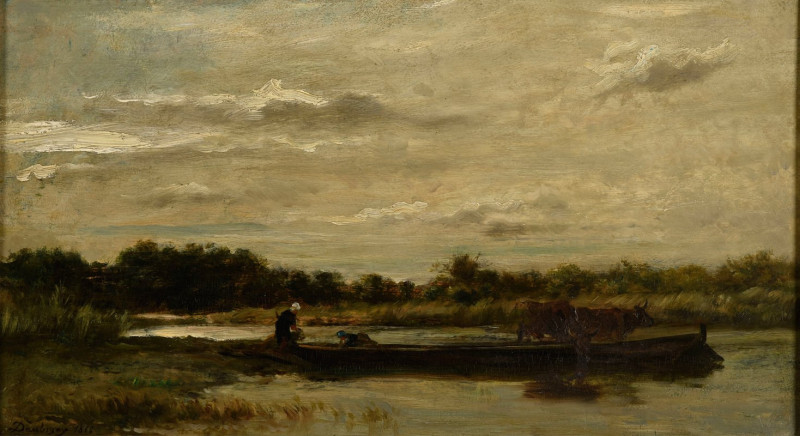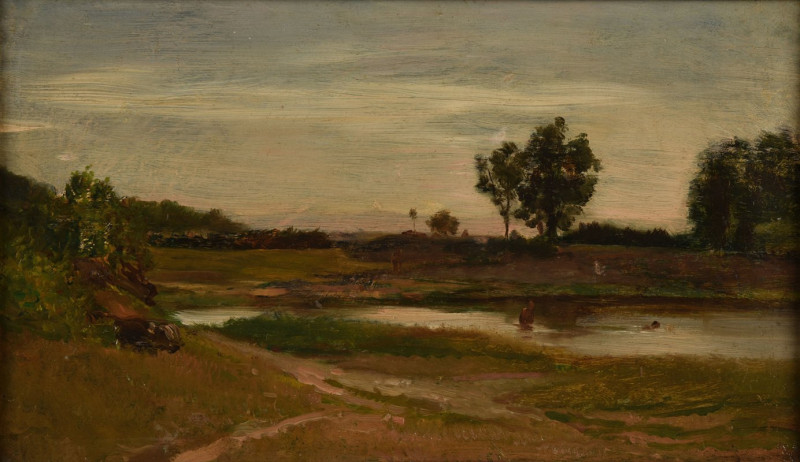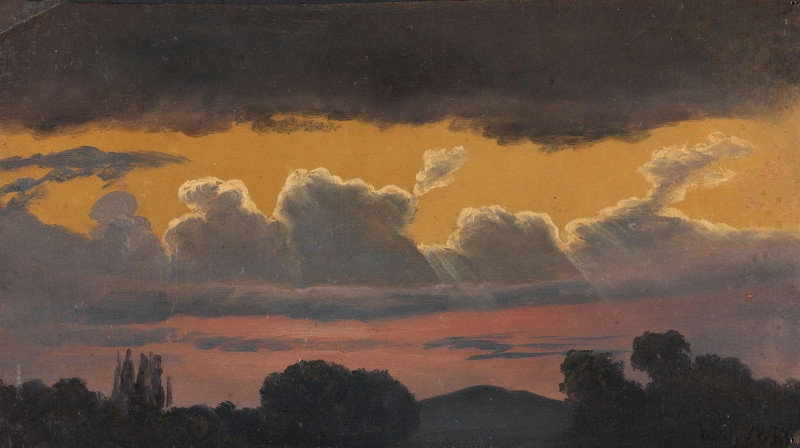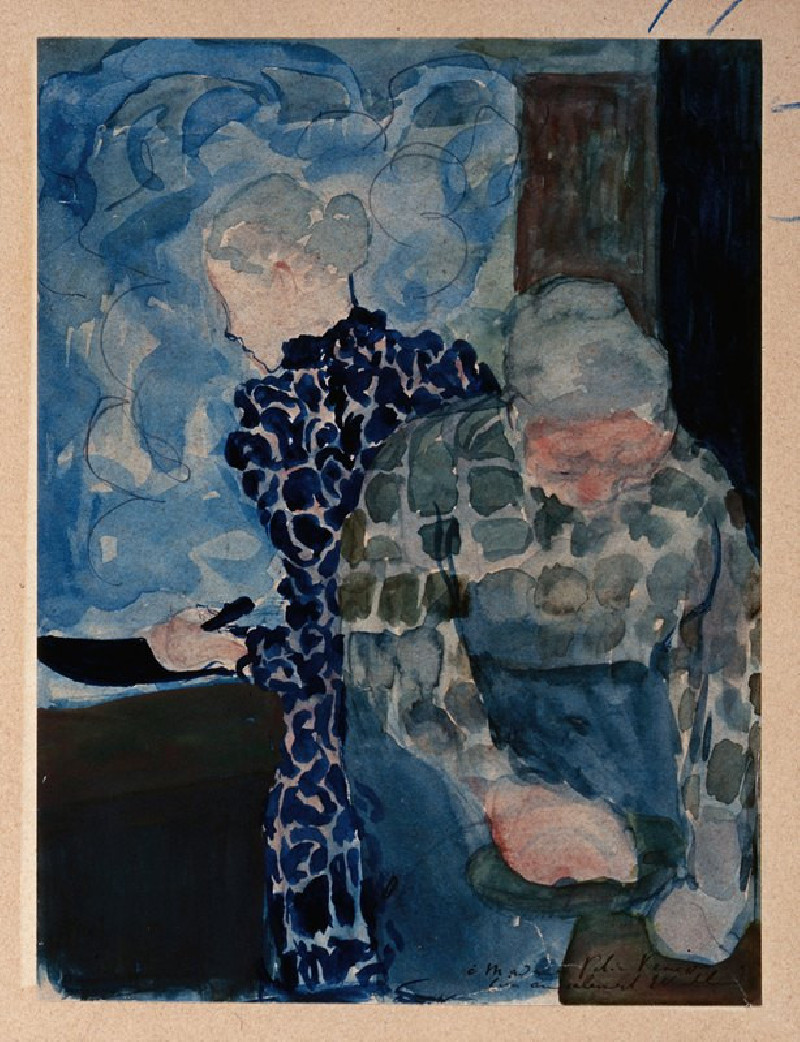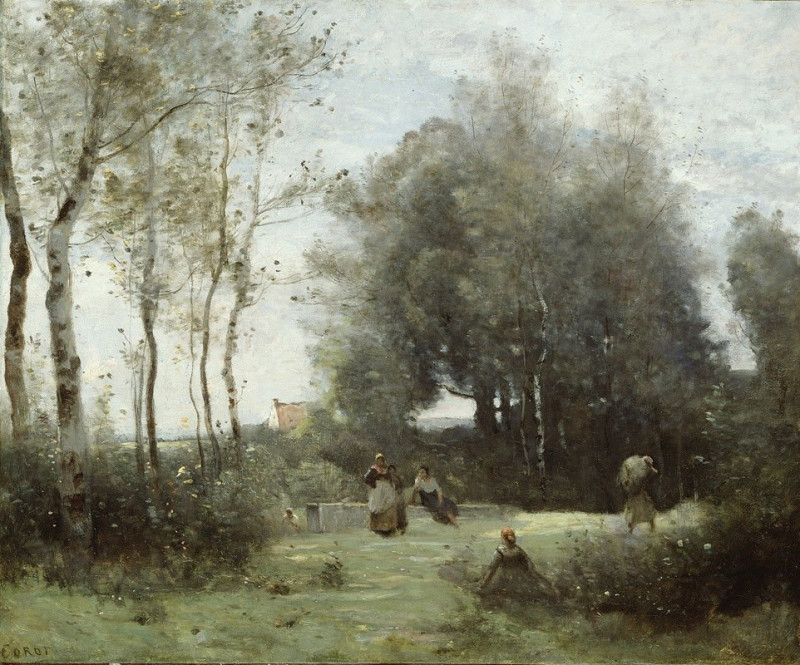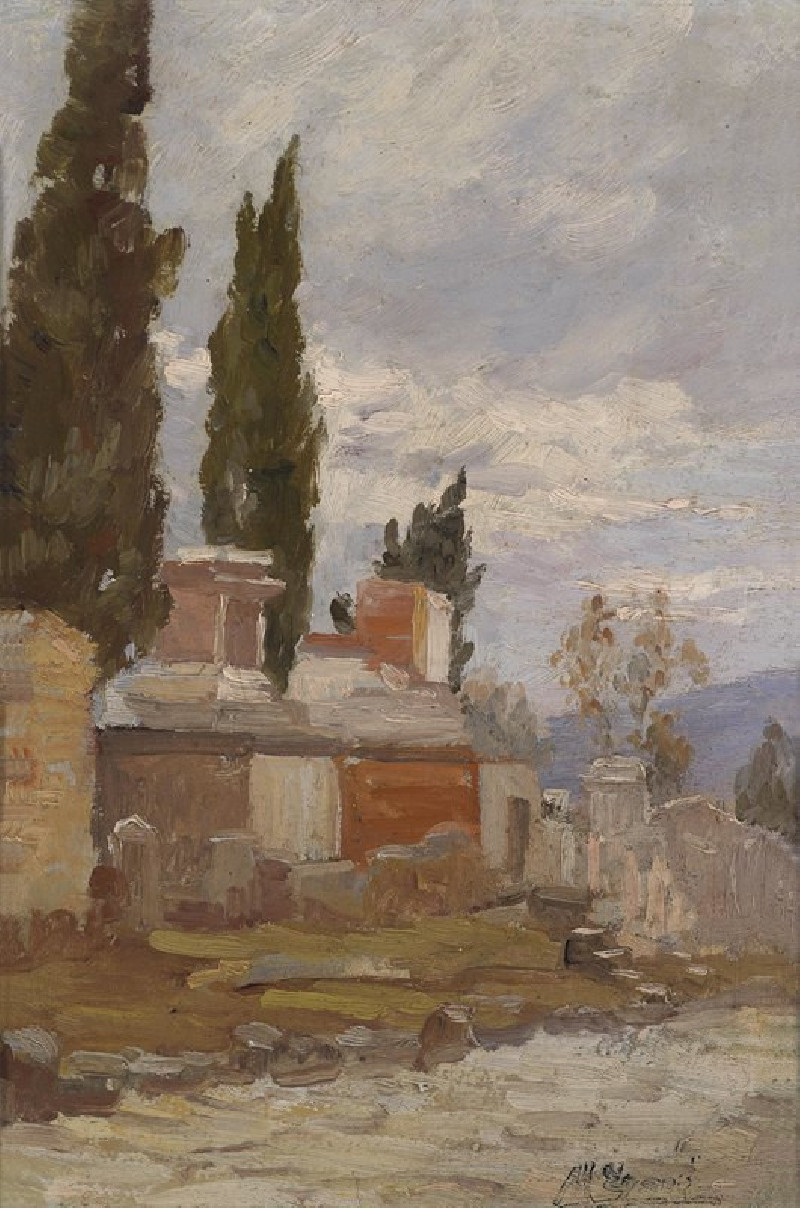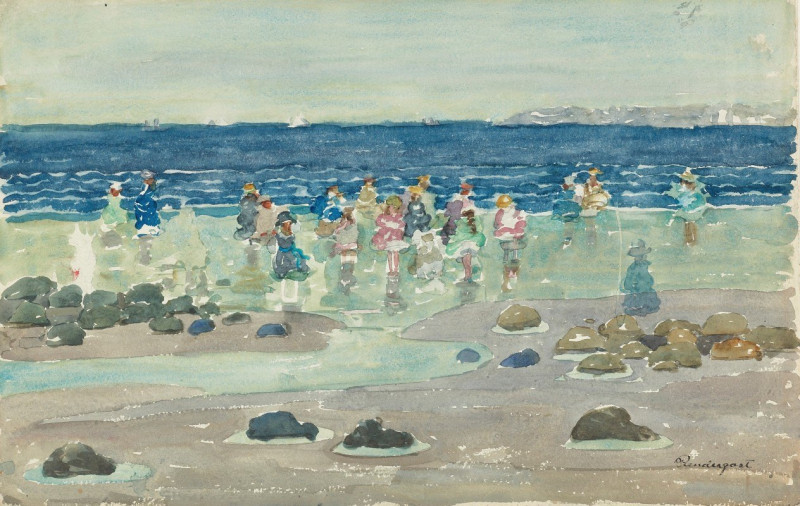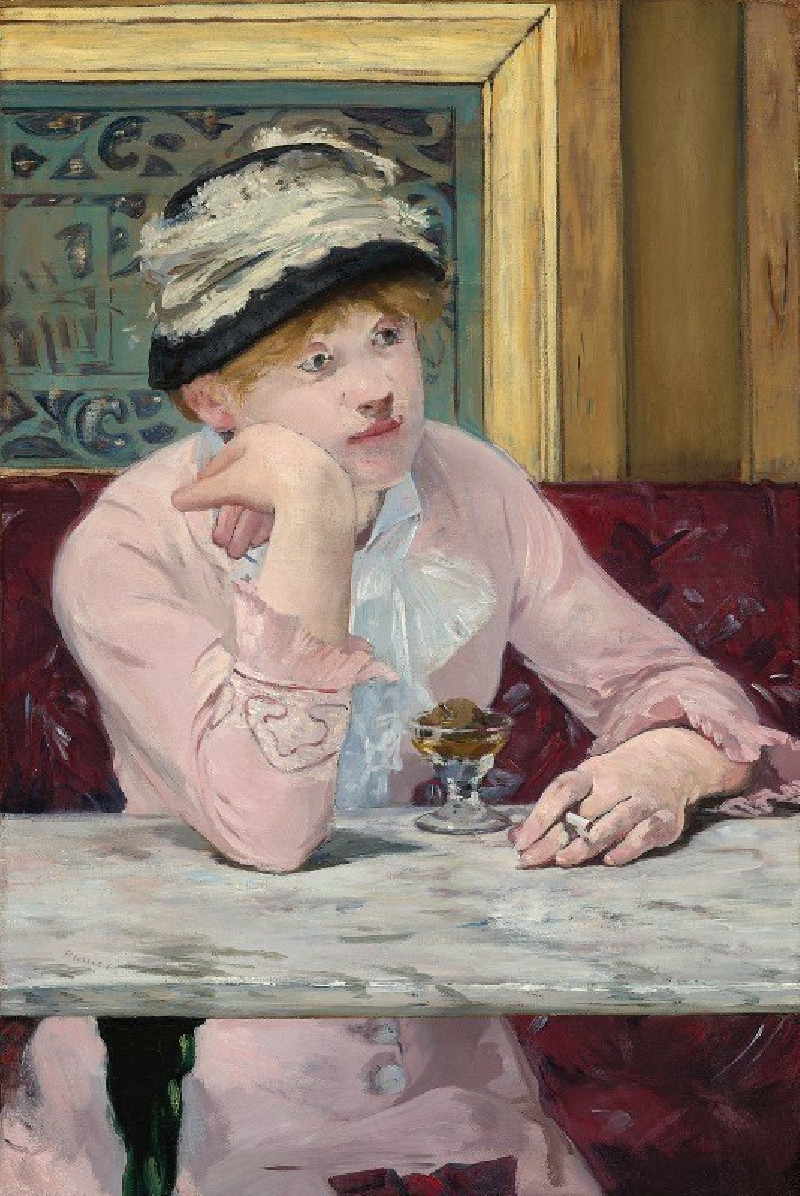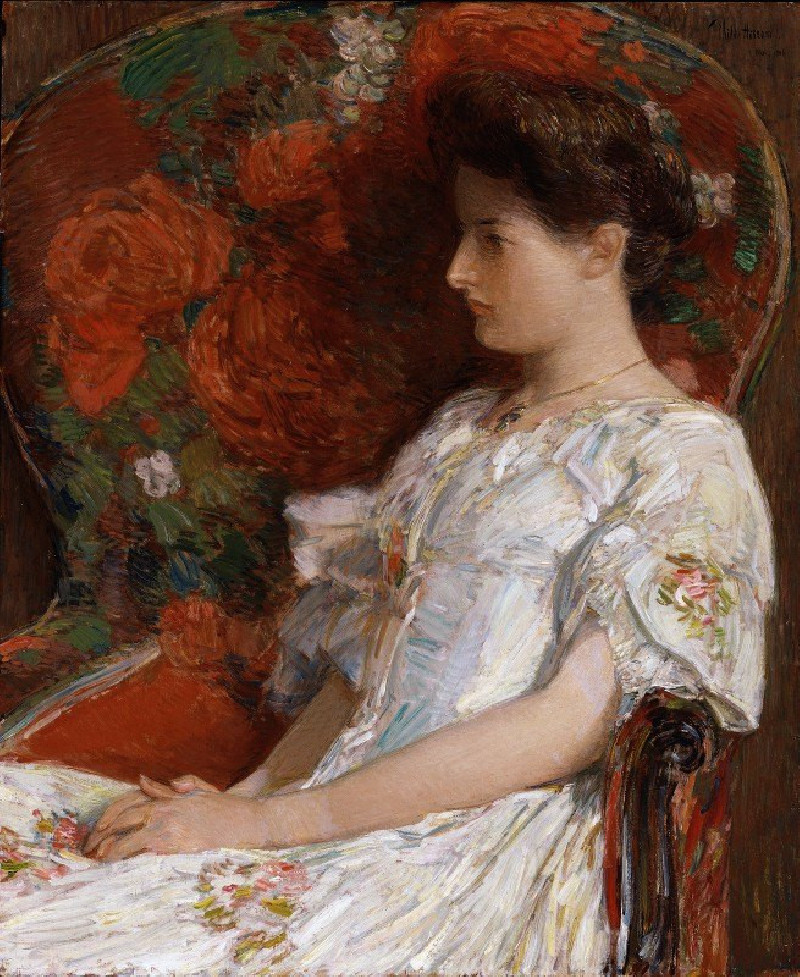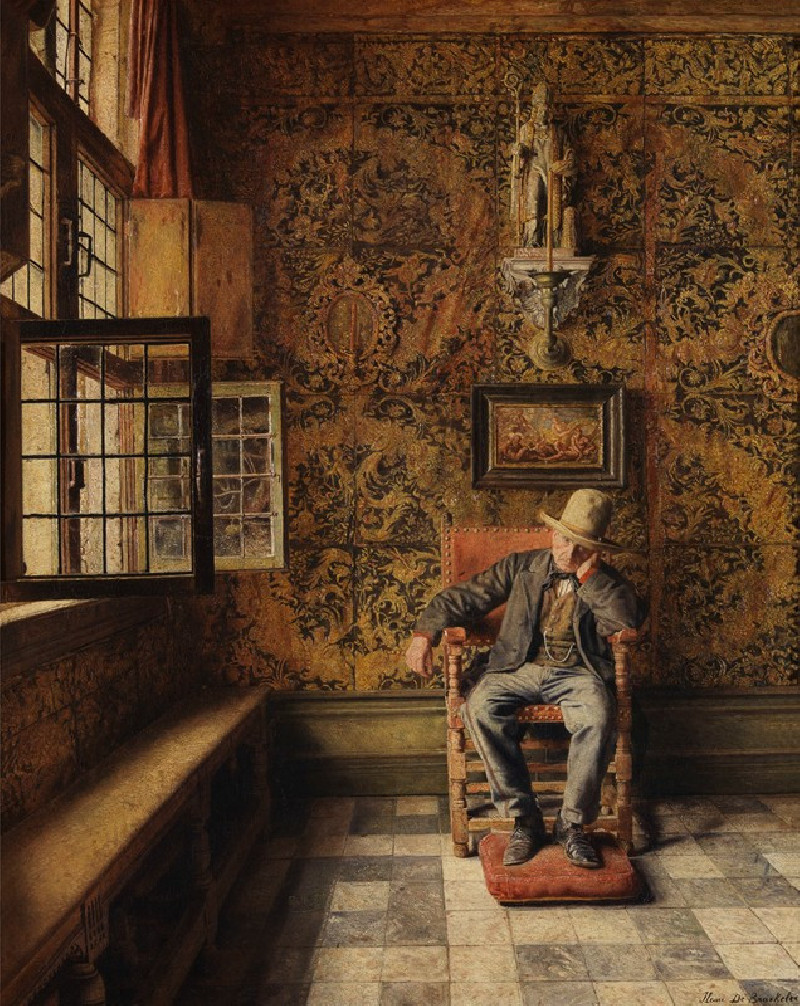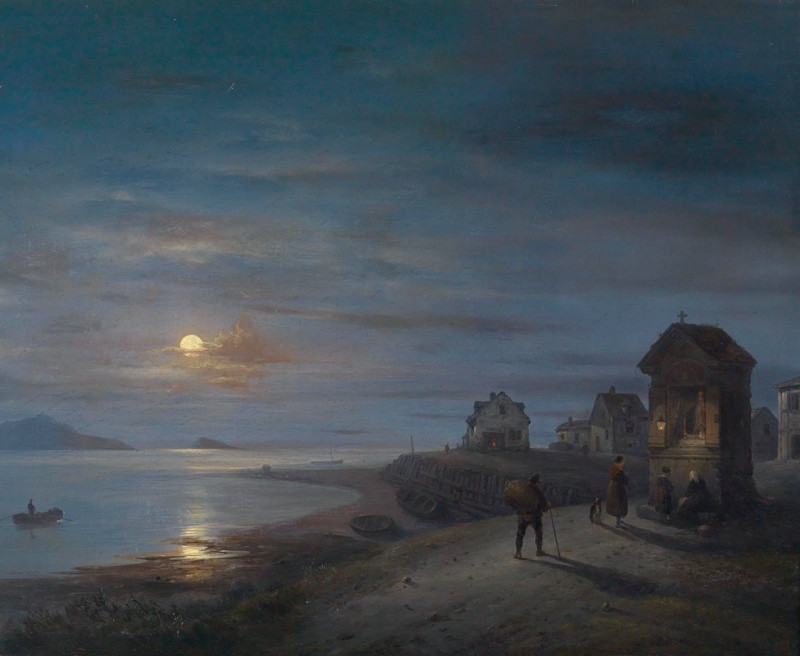The Hillsides of Méry-sur-Oise, Opposite Auvers (1873)
Technique: Giclée quality print
Recommended by our customers
More about this artwork
Explore the tranquil beauty captured in Charles François Daubigny's masterful landscape painting, "The Hillsides of Méry-sur-Oise, Opposite Auvers," painted in 1873. This work of art embodies the gentle essence of the French countryside during a serene moment in time, highlighting Daubigny’s profound connection with nature.At first glance, the viewer's eye is drawn to the calm waters of the Oise River, reflecting the soft, shifting skies above and the lush foliage that frames its banks. A lone fisherman, positioned in a small boat, creates a focal point of human presence within this natural panorama. The subtle ripples around the boat suggest a quiet movement, enhancing the overall sense of peace and tranquility.The distant hills, rendered in soft hues, and the sky streaked gently with the warm colors of dawn or dusk, evoke a timeless allure. Daubigny’s use of muted greens, blues, and earth tones contributes to a harmonious composition that invites contemplation and admiration."The Hillsides of Méry-sur-Oise, Opposite Auvers" is not merely a representation of a locale but a vivid impression of the artist’s experiences in the natural world. This painting stands as a testament to Daubigny's influence in the development of landscape painting, a precursor to the Impressionist movement that valued light and atmospheric conditions in their work.
Delivery
Returns
Charles-François Daubigny (15 February 1817 – 19 February 1878) was a French painter, one of the members of the Barbizon school, and is considered an important precursor of impressionism.
He was also a prolific printmaker, mostly in etching but also as one of the main artists to use the cliché verre technique.

